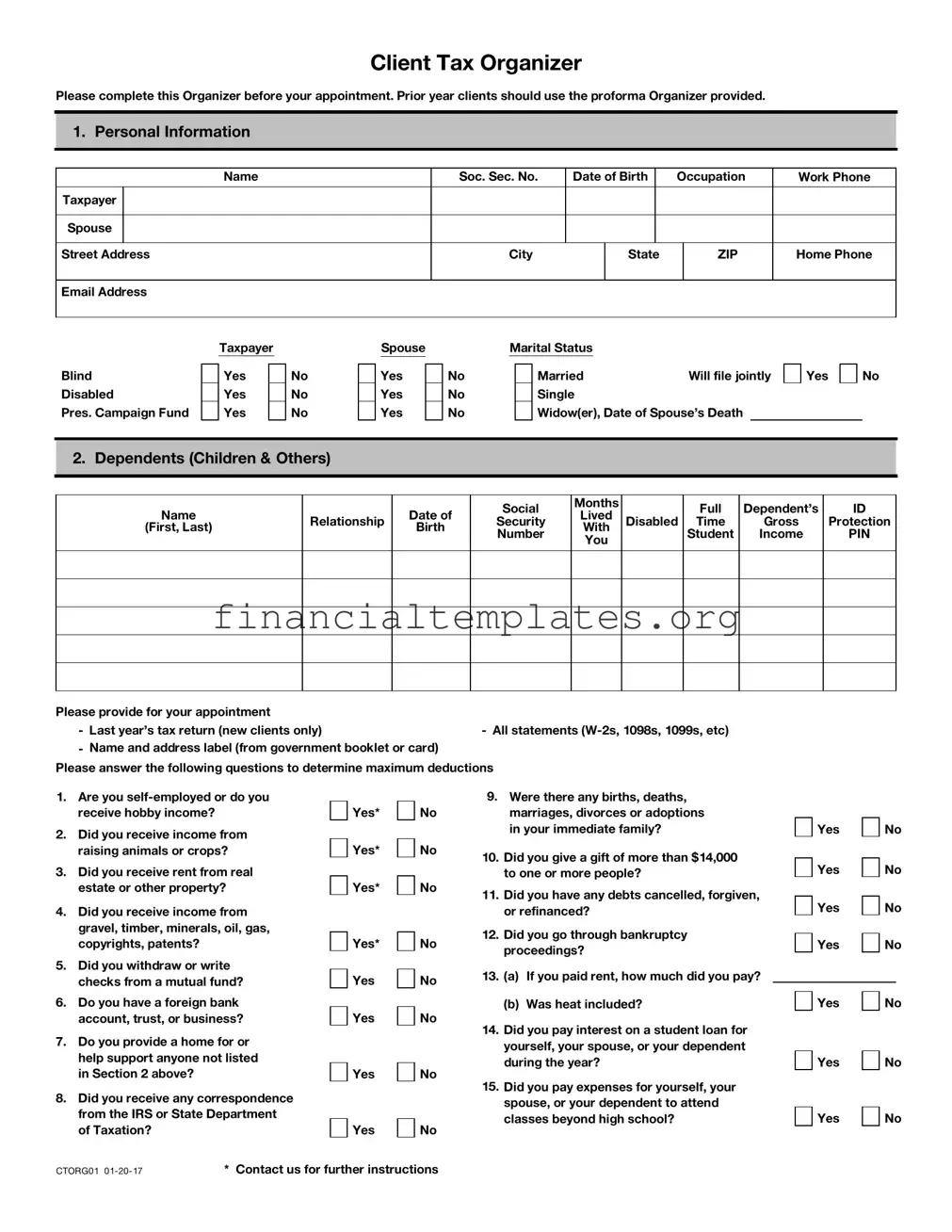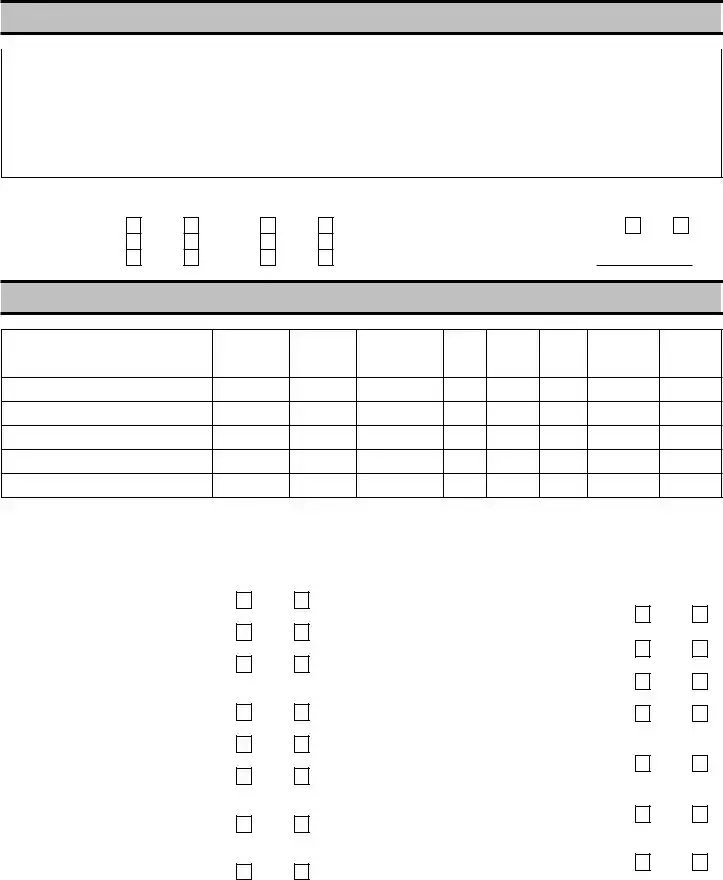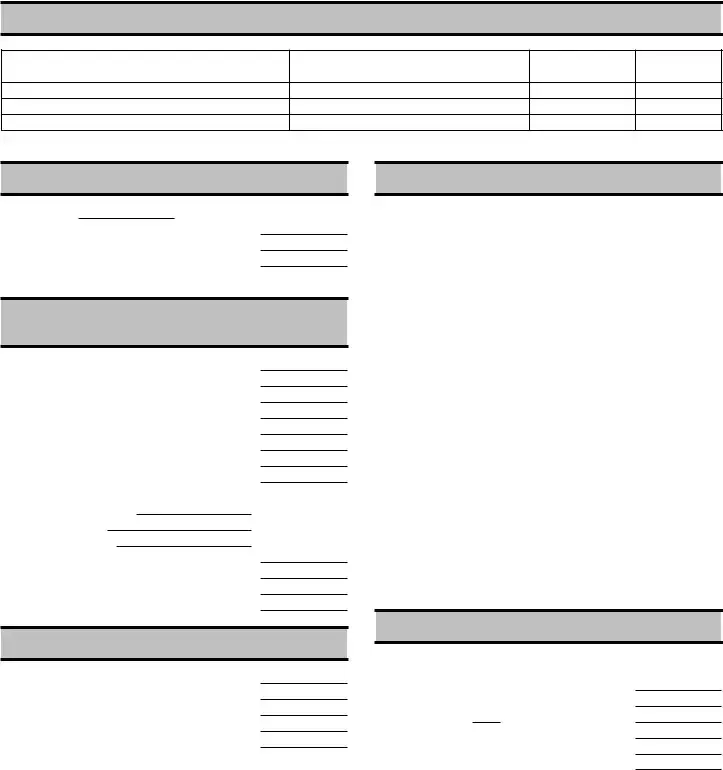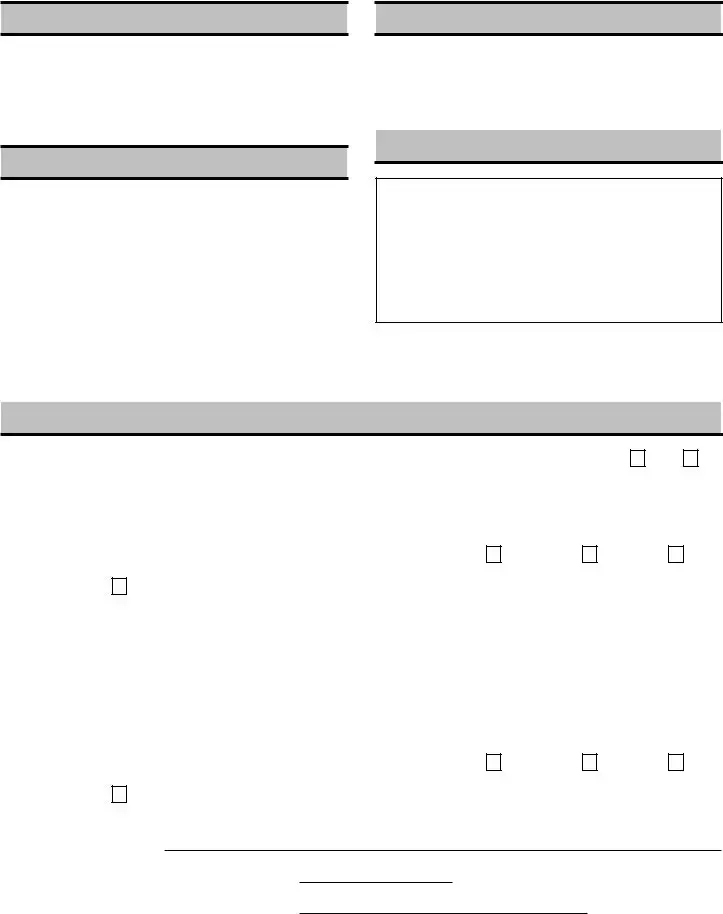The Client Tax Organizer form bears resemblance to a Personal Financial Statement form in how it meticulously gathers an individual's financial positions, albeit for different purposes. While the Tax Organizer focuses on collating details necessary for tax preparation, such as income, deductions, and relevant personal information, a Personal Financial Statement captures an individual’s assets, liabilities, and net worth, often used by financial institutions for loan applications. Both documents serve to paint a comprehensive picture of an individual's financial status, necessitating detailed and accurate information.
Similarly, a New Patient Form used in healthcare settings shares commonalities with the Client Tax Organizer, as both require personal identity details, contact information, and specific status indicators (such as disability or insurance coverage). However, the New Patient Form extends into medical history and health insurance details, emphasizing the importance of individual circumstances and needs in service provision. Both forms centralize critical personal information to enable professionals to offer tailored services effectively.
W-4 Forms, issued by employers for tax withholding purposes, also parallel the Client Tax Organizer in collecting personal and financial information to ensure correct tax treatment. Both documents require individuals to report their marital status and dependents, which directly affect their tax liabilities and potential refunds. These forms are essential in managing one’s tax responsibilities and optimizing the tax-withholding process to prevent underpayment or overpayment of taxes.
Rental Application Forms mirror the Client Tax Organizer in their requirement for detailed personal information, financial status, and sometimes dependents’ information, to evaluate suitability and reliability. Although serving for a different purpose—securing a lease agreement rather than preparing taxes—both forms critically assess an individual’s background and financial capability, highlighting the importance of accuracy and completeness in submissions.
Similarly, the FAFSA (Free Application for Federal Student Aid) shares the aim of evaluating an individual’s financial situation to determine eligibility for aid, like the Tax Organizer assesses tax liability or refund eligibility. Both require detailed financial information, including income, investments, and dependents, to make accurate assessments that will directly impact the individual's financial responsibilities or benefits.
The Identity Theft Affidavit form, though more specific in focus, intersects with the Client Tax Organizer in its handling of sensitive personal and financial information, particularly in situations where an individual’s identity has been compromised. Both forms are crucial in rectifying or preventing financial discrepancies and require a high level of detail and accuracy to ensure proper processing.
Last, Estate Planning Documents, including wills, trusts, and powers of attorney, although far broader in scope and application than the Client Tax Organizer, similarly necessitate comprehensive personal and financial information. These documents ensure proper management and distribution of an individual’s estate in accordance with their wishes, underlining the same core principle of preparative detail and individual specificity found in tax organization.






